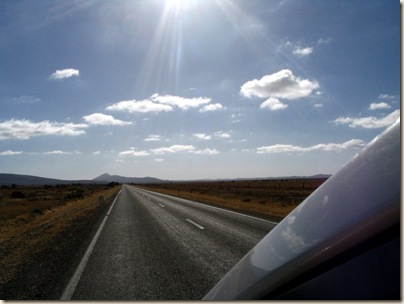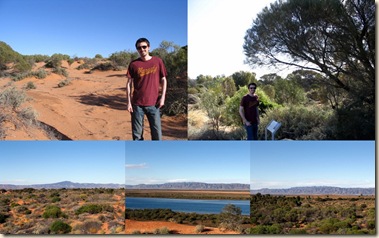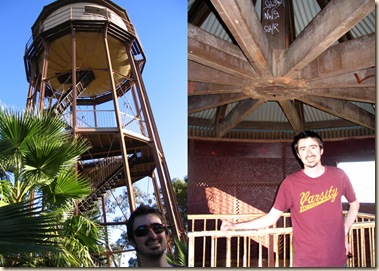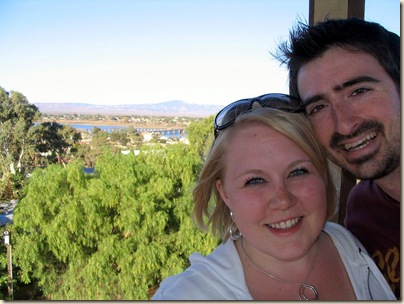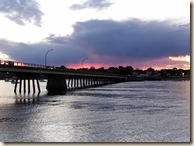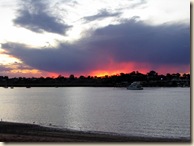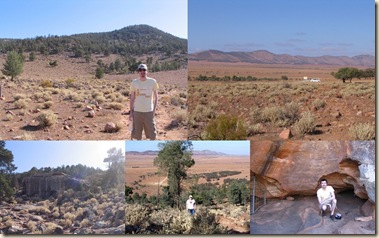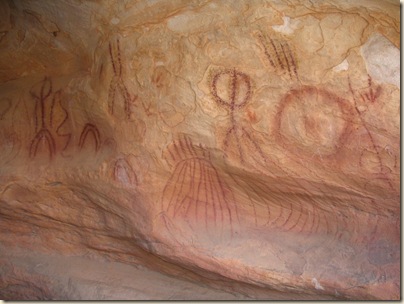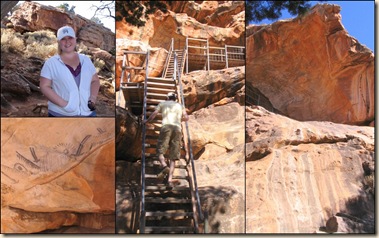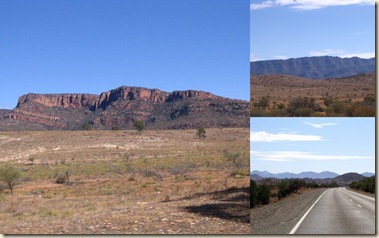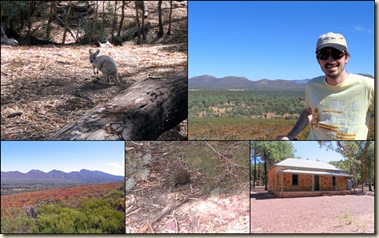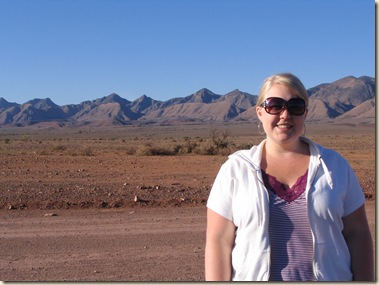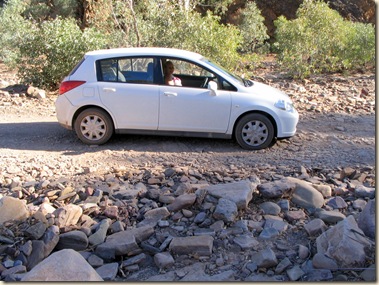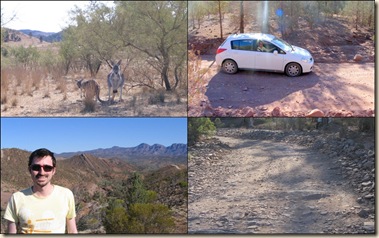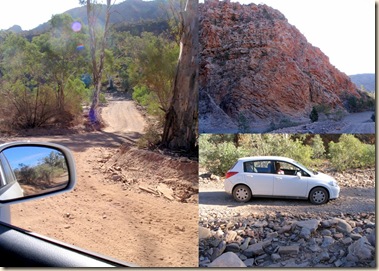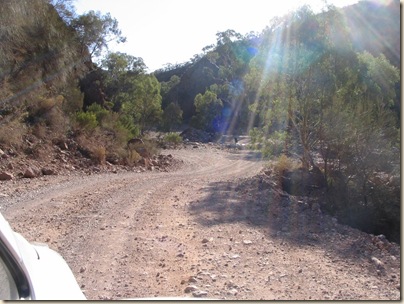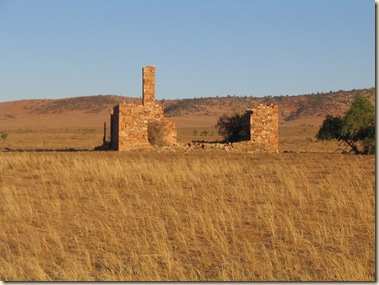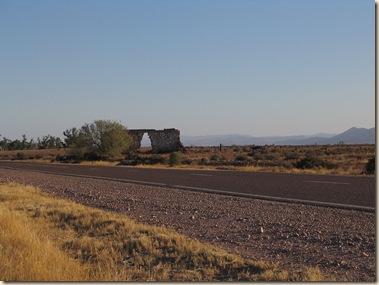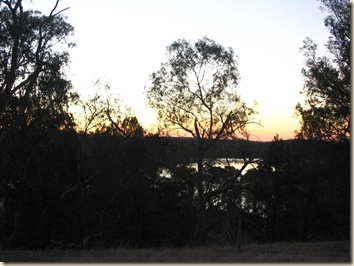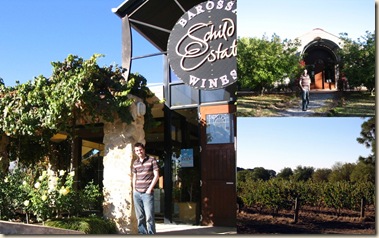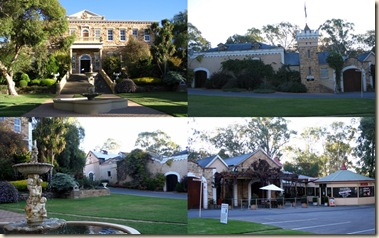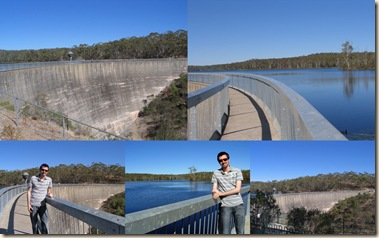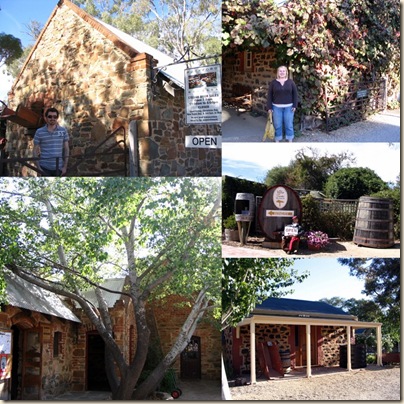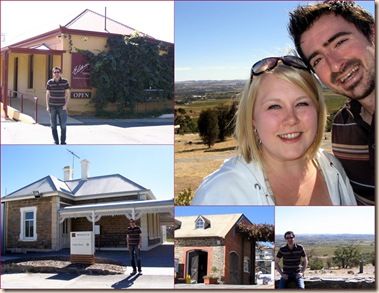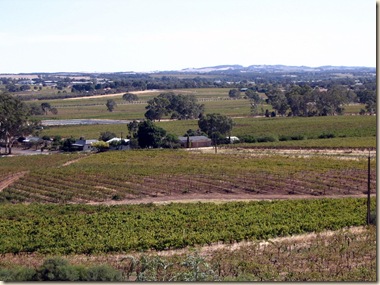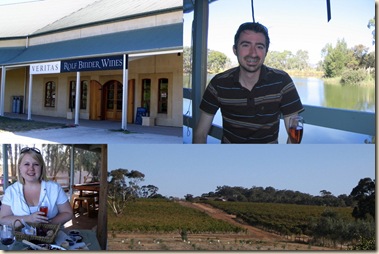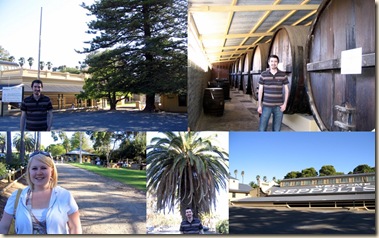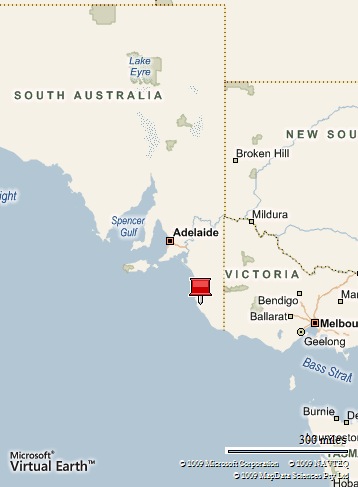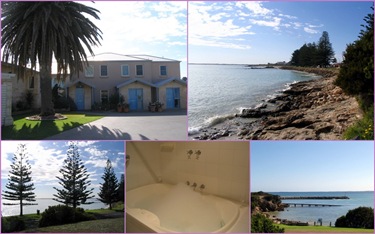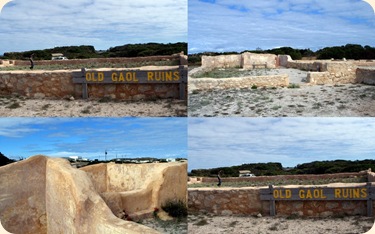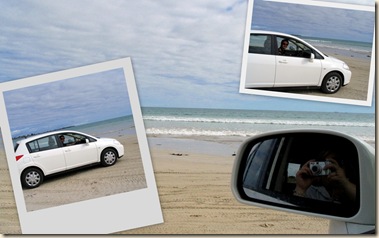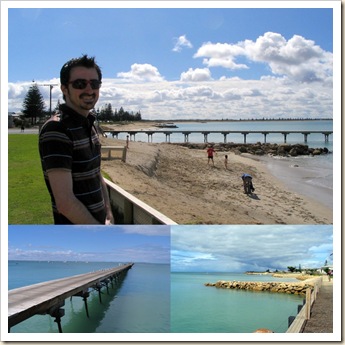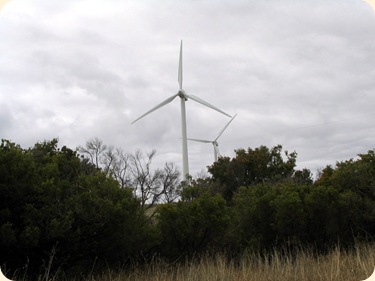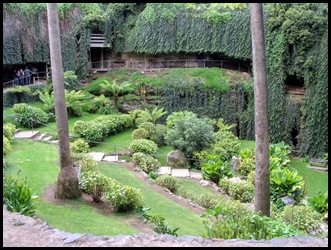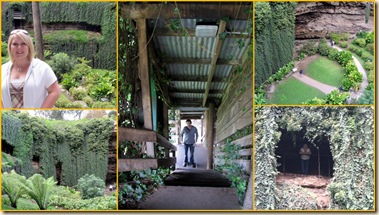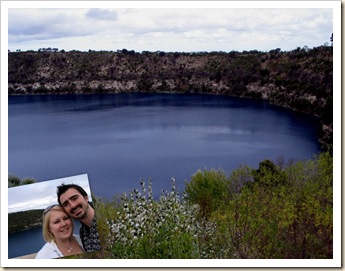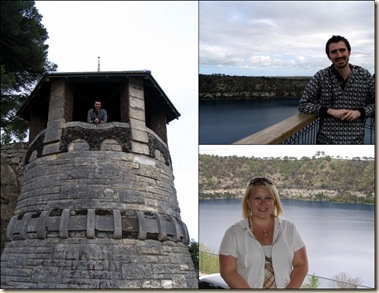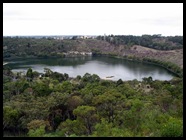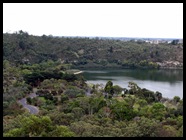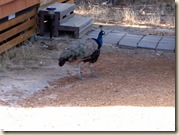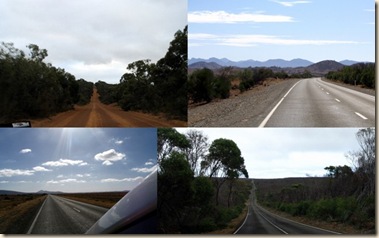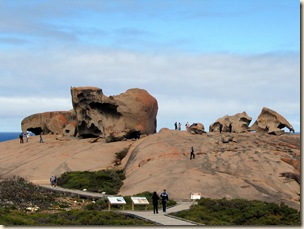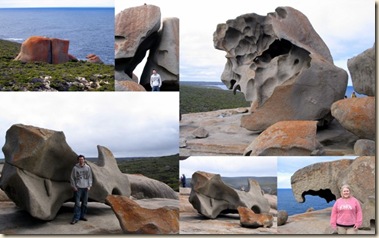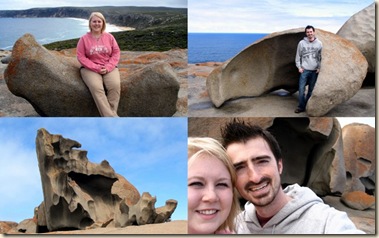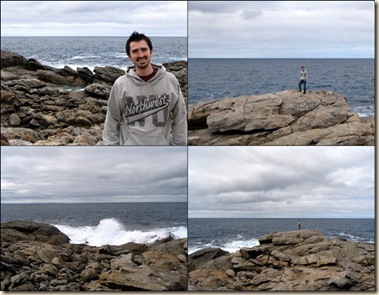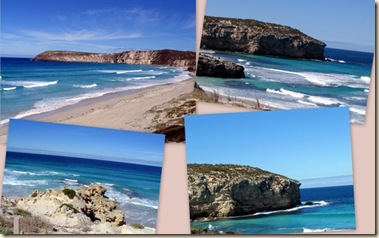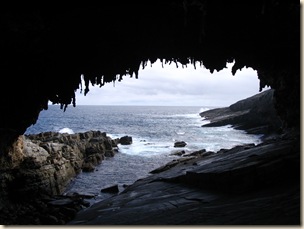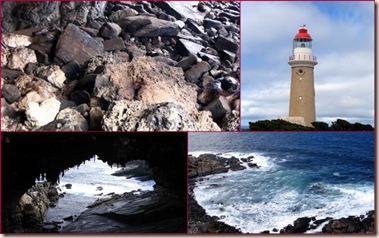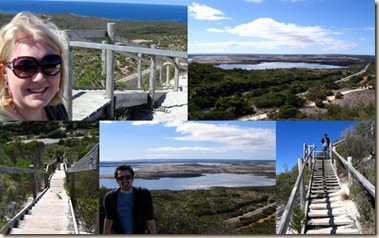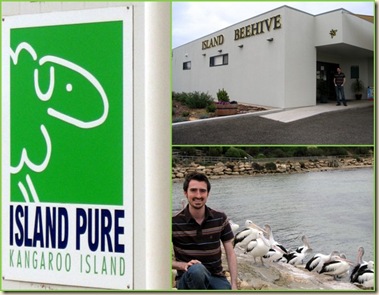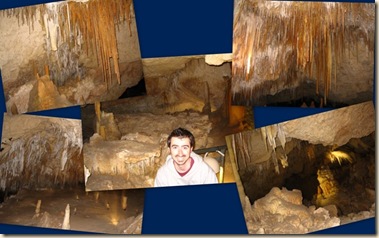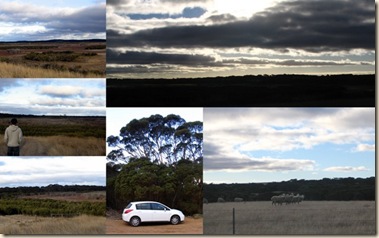Our last stop in South Australia was in the “outback” up near the Flinders Ranges. It was really our first experience being in the outback since coming to Australia.
We weren’t sure what to expect – we have been in a few deserts in our time, and we considered that the outback could either be quite beautiful or… quite boring. It turned out to be amazing. It was our favorite stop on the trip.
We stayed in the town of Port Augusta. It is called the “crossroads of Australia” because it is intersected by the main north-south highway and the main east-west highway. Although it is in the “outback”, the town sits on an inlet so there is a bit more greenery than would otherwise be the case. It even had its own “arid” botanical garden – seen below – which we decided looked a lot like the roadside shrubbery we had just seen during the last 5 hours of driving.
Here is an old water-tower lookout in Port Augusta.
We spent our first evening in town just exploring the area. Earlier in the day we had passed a Chinese restaurant, which we decided sounded good for dinner. I wouldn’t ordinarily bore you with such details except that more traffic enforcement drama ensued. As we approached the restaurant, we saw that it was closed. We weren’t sure what to do next, and at the last second I decided to turn down a side street so we could reconsider our plans. Just after I made the turn, I saw flashing red and blue lights behind me.
We pulled over and waited for the officers (there were two) to approach. They pulled me over for failing to indicate a turn. This is one situation where it is very nice to have a California drivers license. It seems everybody knows, and loves, California. I mentioned that we were on holiday from CA, and the officers immediately started asking me about how we were liking the area, what we had already seen and where we were going next. They even started giving us ideas on where to go. I told them my Chinese restaurant story, and the officers told us that place was dodgy anyway and they gave us directions to a better Chinese restaurant nearby. They then gave me an official warning about using my turn signals. We kept it as a souvenir.
Our next day, we left Port Augusta and headed further into the outback towards the Flinders Ranges National Park. We stopped at the Yourambulla Caves on the way, which are home to some aboriginal cave paintings. We had never seen anything like it before, and it was quite spectacular.
These collages are tiny, so I recommend clicking on them to see more detail.
In the Flinders Ranges Park, we started by hiking into the Wilpena “Pound.” This is basically a section of the Flinders range of mountains that makes a perfect circle with a flat prairie in the middle. The picture above is of the outside of the Pound. The top-right picture in the collage below is on the edge of the Pound looking down into the center. We also spotted some more wildlife on our walk up, which was cool.
To access most of the beautiful scenery, we had to take dirt roads. That wasn’t anything new for this trip, but we ended up on one 38-mile long scenic “road” that I’m sure was actually a 4x4 track. It was pretty shocking in parts. But, our little Nissan made it all the way through without getting stuck or (noticeably) damaged.
Did you notice the picture of the brick house in the Wilpena Pound collage about half-way up? It was a restored homestead of a family who lived there and farmed/ranched the Pound during the late 1800s. There were some plaques telling the story of the family, and their lives were a tremendous struggle – never enough water and therefore never enough food. It was kind of a sad tale, but what was more impactful is that it was also the untold story of thousands of others who tried and failed to make a living in the outback.
As we drove throughout the area, we saw many, many houses that looked like the one below. There were never any markers or plaques on these, but I couldn’t help but think about the families that once lived there – literally in the middle of nowhere. The entire family surely worked endlessly trying to eke out an existence, but they almost certainly never achieved much success. And now their stories are all but forgotten; the only remnants of their time spent in the outback are these ruins.
There are still some people who try to make a living in the outback as pastoralists. They raise cattle and sheep on vast areas of wide open land, constantly herding their animals from place to place. These “stations” as they are called (like really large ranches) are often hundreds of square miles in area. The current largest in South Australia is the Anna Creek Station, which is over 13,000 square miles. That is the land area of Maryland + Delaware + Rhode Island + a bit more.
Our travel agent told us that South Australia was underrated, and I would say that we agree. It was a low-key trip, but it turned out to be an amazing experience. All said and done, we thought the outback portion of our trip was the most interesting. Our scenic drives and hikes in the Flinders were particularly spectacular. Thanks for reading along with us!
